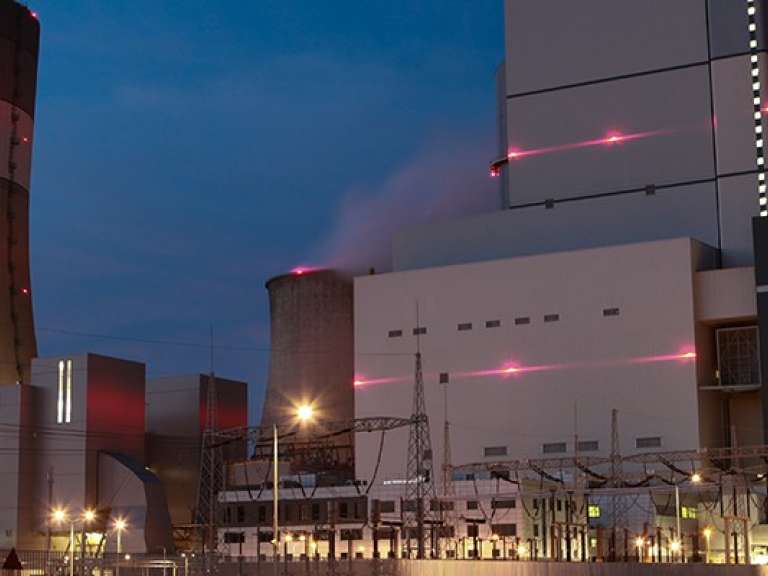How to Enhance Coal-Fired Steam Plant Profits by Capturing More Revenue
Heidi VellaImproving flexibility and efficiency at low loads can enhance steam plant profits, along with lowering maintenance costs.

Due to the often unpredictable nature of renewable energy generation, it's challenging to meet grid demand, along with traditional daily dispatch cycles. This, in turn, is affecting the daily operations of baseload steam-powered generation plants. However, boosting plant flexibility and reducing high maintenance costs can enhance steam plant profits in regions affected by growing renewable energy generation.
Due to the renewables in the system, traditional steam-powered plants are seeing fewer hours in operation than they did years ago and are typically having to start up and shut down more often. This change in the energy dynamic is hitting their operations on both revenue and maintenance costs.
In regions that are heavily focused on renewables, such as South Australia, this has resulted in coal-fired power plants dropping out at an alarming rate, leaving behind an insecure supply.
Yet steam plant managers can better position themselves to take advantage of the unexpected peaks in demand that occur when the wind slows or the clouds cast over.
To do this, a plant needs to have a high level of flexibility and agility, including a high ramp rate, fast start-up and shutdown capabilities, and the ability to operate at lower loads. By matching this with improvements in efficiency and reduced maintenance costs, operators of coal and other steam-powered plants can streamline their operations and increase their revenue capture.
However, there has been a general reluctance to invest in existing coal plants. This is often because the timeline of the plant is considered too short, or investments in newer energy sources are more attractive.
Today, traditional power plant operators are faced with a dilemma. They can either shut down a plant at times of reduced demand and absorb the associated costs with shutdown and start-up, or make investments to allow the plant to operate at very low loads and take up opportunities in the market when they arrive—potentially extending the plant's lifetime.
If a plant can operate at 25–30 percent instead of only 55 percent and above, it can run cost effectively for longer periods, avoiding shutdowns and start-ups that use fuel oil and add substantial costs to the plant. At low loads, operators can take advantage of opportunities in demand when they arise, providing additional power output without needing to turn on another unit. Furthermore, reducing the frequency of shutting down and starting up ultimately reduces emissions and general wear and tear.
It's also important to make operations at minimum and part load efficient enough to reduce operating losses at times of low demand. To achieve this flexibility in plants not originally built to operate this way, plant managers can make some smart investments in retrofitting technology and optimizer software.
For example, when a plant is in low load, flame scanners can be added in the boiler to ensure stable and safe operations. Furthermore, it is important to maintain steam temperature to the steam turbine, because too much cooling can be limiting when it starts ramping up again. Installing an additional surface in the boiler and an environmental control system, as well as technology to bypass hot flu gas to the SCR to keep it warm, can increase efficiency.
Regions such as India and China, which have high energy demand coupled with aggressive renewables targets, can especially benefit from increased flexibility in incumbent power supply. In both countries, there are many old coal-fired plants that will need to adapt to this new environment.
Since power plants are now required to start and stop more often, it is important to improve efficiency and reduce maintenance costs for starting up and shutting down.
Software solutions can improve the general efficiency of plants by enhancing boiler operation, for example. However, to properly improve operations, it's better to consider not only individual units, such as the steam turbines, but the overall plant. Components like the generator, the air quality control system, the water and steam cycle systems, electrical mechanical auxiliaries, and the cooling system all need to be considered in asset upgrade decisions.
Furthermore, the operational efficiency of the plant can be managed by sensors on different units that record vibrations and temperatures and predict when failure will occur, so parts can be replaced before they fail. Being able to predict everything that is going to happen and exactly when it is going to happen can also help plant operators better manage their staff's time and schedule outages.
Using technology to manage and monitor assets can enhance steam plant profits. By using better day-ahead demand predictions and historical data and algorithms, plant managers can create an operation that is both flexible and agile. Doing so enables plants to provide electricity at times of higher demand at the same price as baseload.
Most markets already see a high penetration of renewables and that is not going to go away—only increase. However, due to the need for energy security, steam-generated power plants are going to consistently be part of the energy mix for at least the foreseeable future, but the way these plants operate will likely continue to change. Plant operators need to be ready.
Renewable energy's share of the market is growing, but what will it take for zero-carbon power generation to replace fossil fuels as the leading global energy supplier—will it be more than price parity?
Virtual reality may be more closely associated with gaming than big business, but for the power sector VR can yield substantial benefits. It's when 3D becomes 4D that things get really interesting.
GE's gas turbine engineering leader, Jim Masso, discusses the cross-fleet capabilities that can transform aging power plants with new, innovative technological advancements.